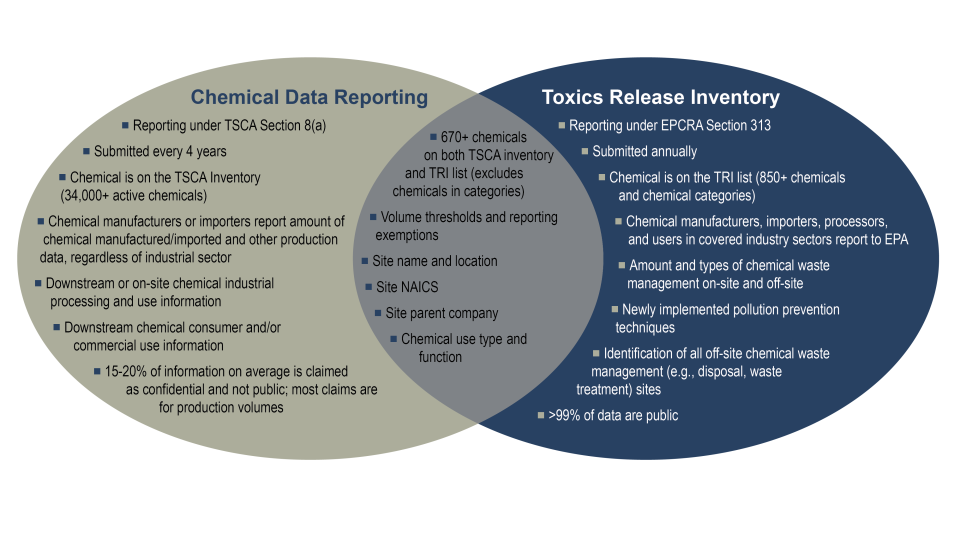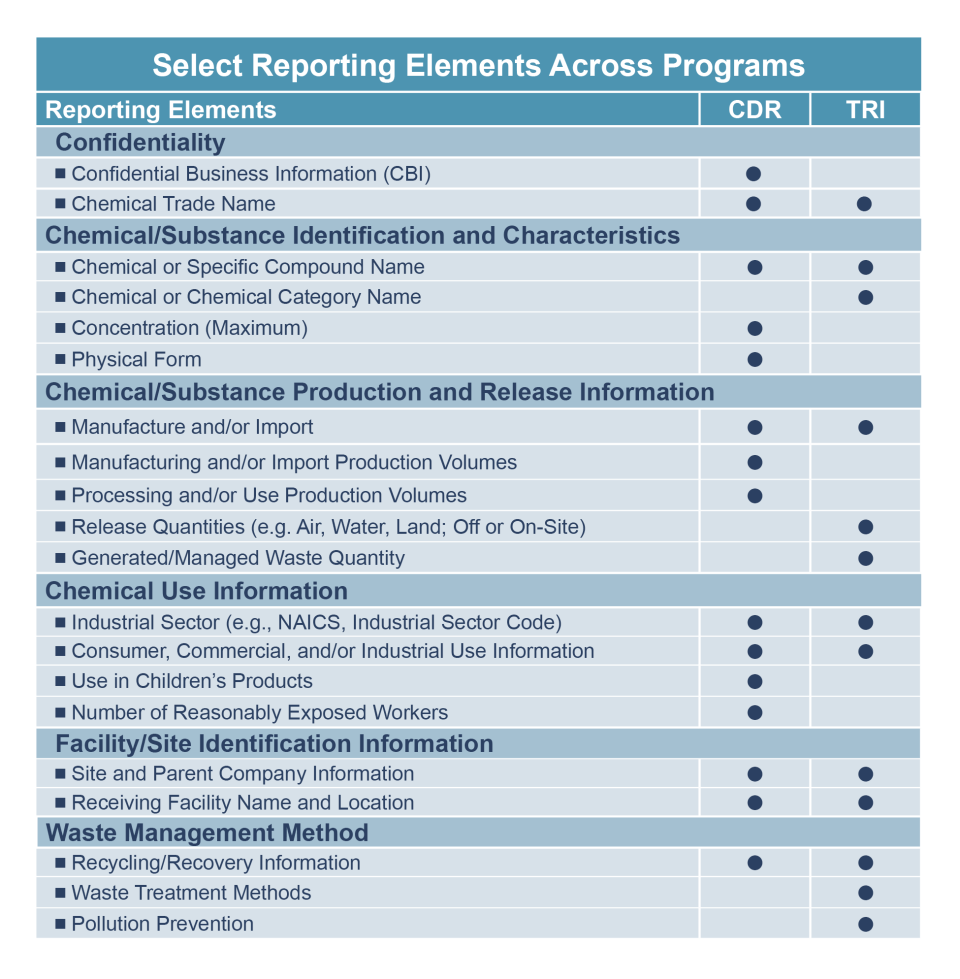CDR and TRI Comparison
How does CDR differ from the Toxics Release Inventory (TRI)?
Similar to EPA's CDR Program, EPA's Toxics Release Inventory (TRI) Program also collects chemical information from industry. Some of the chemicals that are reported to the TRI Program are the same as those reported to the CDR Program, and even by the same organizations. There are, however, some fundamental differences between the two Programs.
The key distinction is the purpose of the information collected. The TRI was established by the Emergency Planning and Community Right-to-Know Act of 1986. The goal of the TRI is to provide the public, rather than EPA, with information about toxic chemicals. An important use and purpose of the data is captured by the title of the law: Community Right-to-Know. The CDR was implemented under Section 8 of TSCA. The primary purpose of the CDR is to provide EPA with up-to-date information on the production and use of chemicals in commerce. Unlike the scope of chemicals subject to TRI reporting, the scope of chemicals subject to CDR reporting is not limited to chemicals that are toxic. EPA uses CDR information for prioritization purposes and in the assessment of risks posed by these chemicals among other activities.
Other differences between the CDR Program and the TRI Program are the frequency of data collection and the types of information collected. CDR data are reported to EPA on a four-year collection cycle, whereas TRI data are reported annually to EPA. CDR data primarily pertain to information on processes, uses, and production volumes of chemicals listed on the TSCA Inventory, whereas TRI data pertain to the quantities of chemicals included on the TRI list of toxic chemicals released to the environment or otherwise managed as waste by industrial and federal sites. While most of the chemicals included on the TRI chemical list of toxic chemicals are also on the TSCA Inventory, toxicity is not a criterion for inclusion of a chemical onto the TSCA Inventory, whereas toxicity is a major criterion for inclusion of a chemical on the TRI list of toxic chemicals (hence the name "Toxics Release Inventory"). As with the CDR and TRI programs themselves, the TSCA Inventory and the TRI list of toxic chemicals serve largely different purposes.

» View larger image
It is useful to analyze the information collected by both programs on the same chemical and/or the same site. Used together, CDR and TRI data for a given chemical can provide a more holistic look at the lifecycle of the chemical. For instance, CDR provides chemical information on manufacturing and/or import production volumes and processing and use (i.e., industrial, commercial, consumer), and TRI provides quantities of chemicals released into the environment or otherwise managed as waste through recycling, energy recovery, or treatment for destruction. For a chemical that is manufactured domestically at a given site, one could use the production volume data and TRI data submitted by the site (facility) for the same calendar year as a starting point for evaluating the quality of the process(es) used at the site to manufacture the chemical. For additional examples of how CDR data and TRI data reported for the same chemical can be used together, see examples of combined TRI and CDR data uses.
The 2020 CDR National Review focuses on the current and past reporting cycles for CDR and does not include any TRI-reported information. EPA uses CDR data primarily to inform chemical prioritization for further review and evaluate chemical exposures. The CDR and TRI programs share some similarities, and these are shown in the diagrams above and below. More information is available on the CDR Program website and the TRI Program website.

